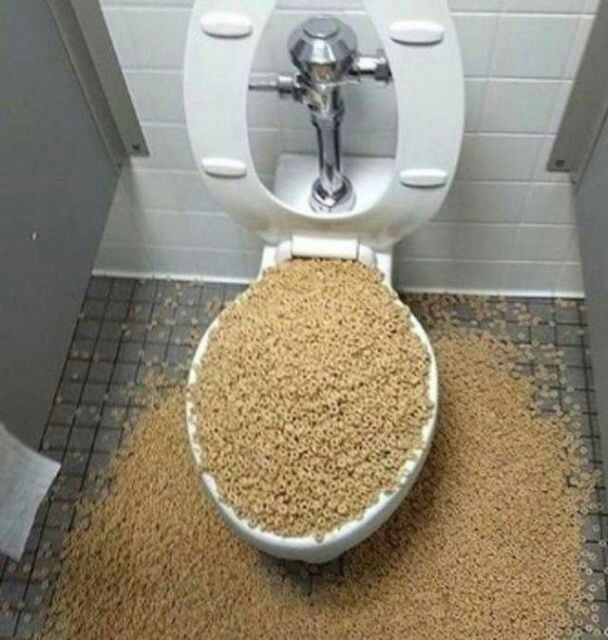Can You to Dispose of Food Waste in the Toilet?
Can You to Dispose of Food Waste in the Toilet?
Blog Article
Just how do you feel in regards to Flushing Food Down the Toilet??

Introduction
Many individuals are frequently confronted with the dilemma of what to do with food waste, specifically when it comes to leftovers or scraps. One typical question that arises is whether it's okay to purge food down the bathroom. In this post, we'll delve into the reasons that people could take into consideration purging food, the consequences of doing so, and alternative approaches for proper disposal.
Reasons individuals might think about purging food
Lack of understanding
Some individuals might not recognize the prospective harm triggered by flushing food down the bathroom. They may incorrectly believe that it's a harmless practice.
Convenience
Flushing food down the commode may seem like a quick and easy solution to throwing away unwanted scraps, particularly when there's no close-by garbage can available.
Laziness
Sometimes, individuals may simply choose to flush food out of large laziness, without thinking about the consequences of their activities.
Repercussions of flushing food down the bathroom
Environmental influence
Food waste that winds up in rivers can contribute to air pollution and damage aquatic ecosystems. In addition, the water made use of to purge food can stress water resources.
Pipes issues
Purging food can result in blocked pipes and drains pipes, causing pricey pipes fixings and aggravations.
Kinds of food that should not be flushed
Coarse foods
Foods with fibrous textures such as celery or corn husks can obtain tangled in pipes and trigger blockages.
Starchy foods
Starchy foods like pasta and rice can take in water and swell, resulting in clogs in pipes.
Oils and fats
Greasy foods like bacon or food preparation oils need to never be flushed down the toilet as they can solidify and trigger clogs.
Correct disposal methods for food waste
Using a waste disposal unit
For homes outfitted with garbage disposals, food scraps can be ground up and flushed with the pipes system. However, not all foods are suitable for disposal in this manner.
Recycling
Particular food packaging materials can be recycled, decreasing waste and decreasing environmental impact.
Composting
Composting is an environmentally friendly method to dispose of food waste. Organic materials can be composted and utilized to improve dirt for gardening.
The relevance of proper waste monitoring
Lowering environmental injury
Proper waste monitoring techniques, such as composting and recycling, assistance minimize pollution and preserve natural resources for future generations.
Shielding pipes systems
By preventing the method of flushing food down the bathroom, home owners can protect against costly pipes repairs and preserve the integrity of their plumbing systems.
Final thought
Finally, while it may be alluring to flush food down the commode for convenience, it is necessary to recognize the potential effects of this activity. By embracing correct waste monitoring practices and disposing of food waste sensibly, individuals can contribute to much healthier pipes systems and a cleaner setting for all.
FLUSH FOOD DOWN THE TOILET?
FLUSHING FOOD CAN CAUSE BLOCKED DRAINS IN YOUR HOME
All of the plumbing fixtures in your home are connected to the same sewer pipe outside of your home. This outdoor sewer pipe is responsible for transporting all the wastewater from your home to the Council sewer mains. Even small pieces of food that go down the kitchen sink can cause problems for your sewer. It should therefore be obvious that flushing larger bits of food, such as meat, risks a clog in either the toilet itself or the sewer pipes. Flushing greasy food is even more problematic because oil coagulates when it cools, coating the interior lining of your pipes.
THE TOILET IS NOT A BIN
Food isn’t the only thing that people shouldn’t be flushing down the toilet. People use the toilet to dispose of all kinds of things such as tampons, makeup wipes, dental floss, kitty litter and even underwear. Water goes to great lengths to educate residents about the high costs and stress placed on wastewater treatment systems simply from people flushing the wrong stuff down the toilet. It costs taxpayers millions of dollars each year, and homeowners thousands in blocked drain repairs.
FLUSHING FOOD IS A WASTE OF WATER
Flushing food is a waste of our most precious resource - water. In June this year Level 1 water restrictions were introduced to protect water supply from drought conditions. Much of New South Wales continues to be affected by prolonged drought with recent figures revealing up to 97 per cent of the state remains in drought. Depending on whether you have a single or dual flush toilet, every single flush uses between five and 11 litres of water. In the current climate this is a huge amount of water to be wasting on flushing food that should be placed in the bin (or better yet, the compost).
https://www.jabplumbingsolutions.com.au/blog/can-you-flush-food-down-the-toilet

Do you really like reading up on ? Leave a remark below. We would be pleased to find out your thoughts about this page. In hopes to see you back again later on. Those who enjoyed our blog entry if you please be sure to pass it around. Many thanks for your time. Come back soon.
Call Today Report this page